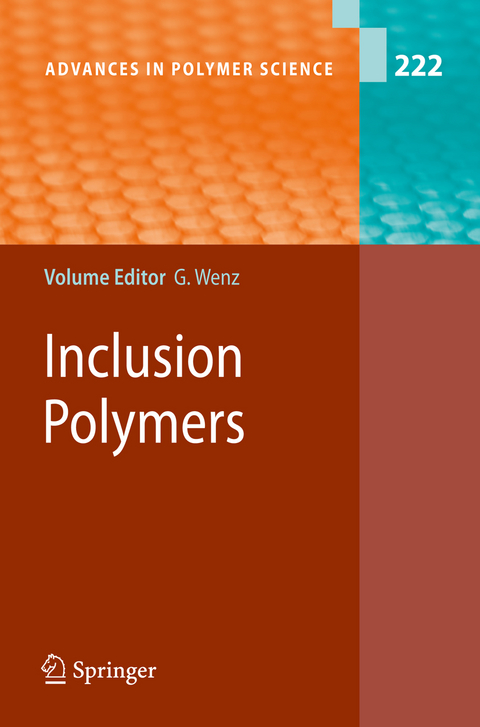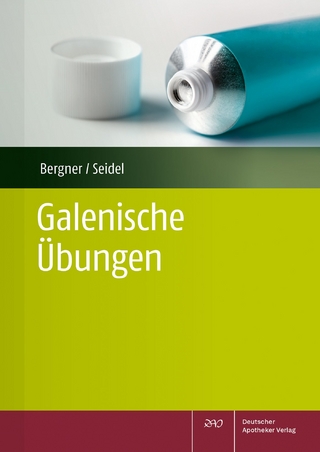
Inclusion Polymers
Springer Berlin (Verlag)
978-3-642-10179-3 (ISBN)
Since Hermann Staudinger coined the concept of macromolecules as covalently linked very large molecular entities in 1922, the main focus of ongoing research has been on the synthesis of polymers and copolymers leading to a great variety of stable, structural, and functional materials. On the other hand, during the last 15 years the knowledge about supramolecular self-organization of polymers with low molecular-weight compounds by reversible non-covalent interactions gained increasing attention. In particular, the interactions of cyclic molecules, called hosts, with polymersbecame increasingly attractive, since the propertiesof polymerssuch assolubilityor crystallinitycanbe alteredwithoutthe needof chemicalreactions. In contrast to regular polymersor copolymers,supramolecularstructurescomprisedof polymers and ring-shaped hosts are not totally stable. Therefore they can show p- grammable lifetimes or adapt speci?cally to different environments. In this respect polymeric supramolecular structures resemble living systems more than regular polymers. This volume is mainly devoted to a very fascinating class of ring-shaped cyclic ?(1?4) linked oligo-glucans, named cyclodextrins. Cyclodextrins are industrially produced from the renewable resource starch. They are especially suitable for the self-assembly of water based supramolecular structures, and they are highly b- compatible. Cyclodextrinsare able to complexboth monomersand polymerswhich offer suitable hydrophobic binding sites. The driving forces are mainly van der Waals and hydrophobic interactions. This complexation process is called inc- sion and the resulting supramolecular structures inclusion compounds. In addition, Chapter 6 of this volume is devoted to another interesting host, a cyclic urea c- pound called cucurbituril, which is able to recognize cationic guest molecules in aqueous solution.
Cucurbituril and Cyclodextrin Complexes of Dendrimers.- Molecular Processing of Polymers with Cyclodextrins.- Polymerization of Included Monomers and Behaviour of Resulting Polymers.- Functional Cyclodextrin Polyrotaxanes for Drug Delivery.- Cyclodextrin Inclusion Polymers Forming Hydrogels.- Recognition of Monomers and Polymers by Cyclodextrins.
From the reviews: "This book is well written and comprehensive, successfully covering the current state of knowledge of (mainly) cyclodextrin inclusion complexes of polymers, their applications, and their potential and future research directions. Inclusion Polymers is recommended for polymer and supramolecular chemists ... and represents a significant contribution to the literature." (Brian D. Wagner, Journal of the American Chemical Society, Vol. 131 (49), 2009)
From the reviews:
“This book is well written and comprehensive, successfully covering the current state of knowledge of (mainly) cyclodextrin inclusion complexes of polymers, their applications, and their potential and future research directions. Inclusion Polymers is recommended for polymer and supramolecular chemists … and represents a significant contribution to the literature.” (Brian D. Wagner, Journal of the American Chemical Society, Vol. 131 (49), 2009)
| Erscheint lt. Verlag | 19.10.2010 |
|---|---|
| Reihe/Serie | Advances in Polymer Science |
| Zusatzinfo | XI, 240 p. 152 illus., 8 illus. in color. |
| Verlagsort | Berlin |
| Sprache | englisch |
| Maße | 155 x 235 mm |
| Gewicht | 384 g |
| Themenwelt | Medizin / Pharmazie ► Pflege |
| Medizin / Pharmazie ► Pharmazie ► PTA / PKA | |
| Medizin / Pharmazie ► Studium ► 1. Studienabschnitt (Vorklinik) | |
| Naturwissenschaften ► Biologie ► Biochemie | |
| Naturwissenschaften ► Chemie ► Organische Chemie | |
| Technik ► Maschinenbau | |
| Schlagworte | Cyclodextrin • Inclusion Phenomena • medicinal chemistry • Pharmacy • Polymer • Polymers |
| ISBN-10 | 3-642-10179-8 / 3642101798 |
| ISBN-13 | 978-3-642-10179-3 / 9783642101793 |
| Zustand | Neuware |
| Haben Sie eine Frage zum Produkt? |
aus dem Bereich


